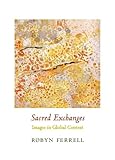Sacred Exchanges : Images in Global Context / Robyn Ferrell.
Material type: TextSeries: Columbia Themes in Philosophy, Social Criticism, and the ArtsPublisher: New York, NY : Columbia University Press, [2012]Copyright date: ©2012Description: 1 online resource (192 p.) : 28 halftonesContent type:
TextSeries: Columbia Themes in Philosophy, Social Criticism, and the ArtsPublisher: New York, NY : Columbia University Press, [2012]Copyright date: ©2012Description: 1 online resource (192 p.) : 28 halftonesContent type: - 9780231148801
- 9780231504423
- 700.1 23
- N72.P6 F47 2015
- online - DeGruyter
- Issued also in print.
| Item type | Current library | Call number | URL | Status | Notes | Barcode | |
|---|---|---|---|---|---|---|---|
 eBook
eBook
|
Biblioteca "Angelicum" Pont. Univ. S.Tommaso d'Aquino Nuvola online | online - DeGruyter (Browse shelf(Opens below)) | Online access | Not for loan (Accesso limitato) | Accesso per gli utenti autorizzati / Access for authorized users | (dgr)9780231504423 |
Frontmatter -- Contents -- Acknowledgments -- List of Photographs -- Art -- Culture -- Gender -- Law -- References -- Index -- Backmatter
restricted access online access with authorization star
http://purl.org/coar/access_right/c_16ec
As the international art market globalizes the indigenous image, it changes its identity, status, value, and purpose in local and larger contexts. Focusing on a school of Australian Aboriginal painting that has become popular in the contemporary art world, Robyn Ferrell traces the influence of cultural exchanges on art, the self, and attitudes toward the other.Aboriginal acrylic painting, produced by indigenous women artists of the Australian Desert, bears a superficial resemblance to abstract expressionism and is often read as such by viewers. Yet to see this art only through a Western lens is to miss its unique ontology, logics of sensation, and rich politics and religion. Ferrell explores the culture that produces these paintings and connects its aesthetic to the brutal environmental and economic realities of its people. From here, she travels to urban locales, observing museums and department stores as they traffic interchangeably in art and commodities. Ferrell ties the history of these desert works to global acts of genocide and dispossession. Rethinking the value of the artistic image in the global market and different interpretations of the sacred, she considers photojournalism, ecotourism, and other sacred sites of the western subject, investigating the intersection of modern art and postmodern culture. She ultimately challenges the primacy of the "European gaze" and its fascination with sacred cultures, constructing a more balanced intercultural dialogue that deemphasizes the aesthetic of the real championed by western philosophy.
Issued also in print.
Mode of access: Internet via World Wide Web.
In English.
Description based on online resource; title from PDF title page (publisher's Web site, viewed 02. Mrz 2022)


